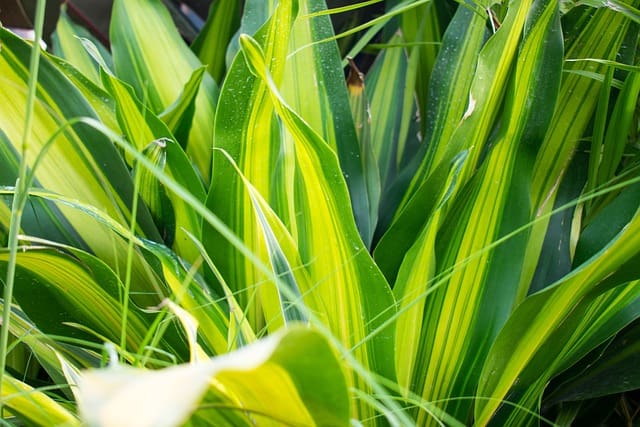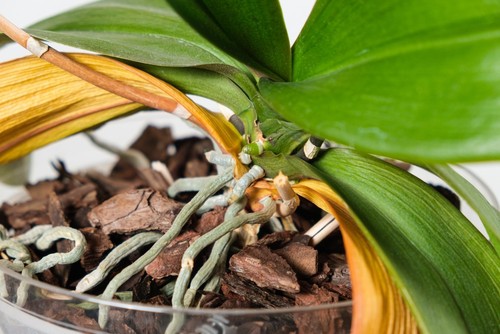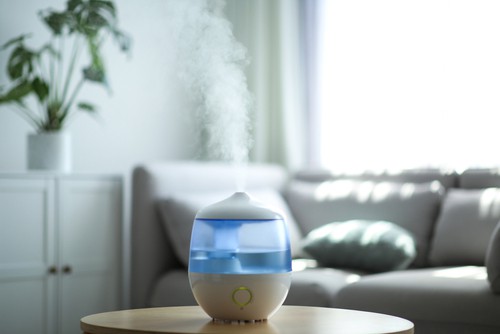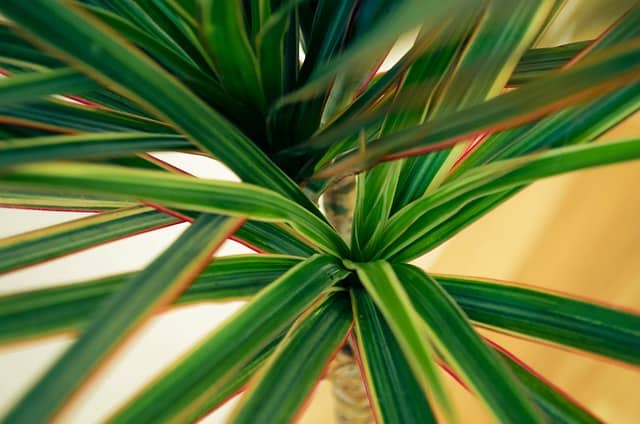Dracaena plants are a popular choice for indoor gardening due to their hardy nature and attractive foliage. However, even with the best care, these plants can sometimes begin to show signs of decline.
If you notice your dracaena plant is wilting, losing leaves, or developing brown spots, it may be in need of some extra attention to bring it back to health.
Recognizing the signs is the first step to save a dying dracaena plant. This may include yellowing or browning leaves, soft or mushy stems, or an overall drooping appearance.
Once you have identified the issue, you can begin to take steps to address it. Factors such as light and temperature, watering habits, soil quality, and pest infestations can all play a role in the health of your dracaena plant.
Key Takeaways:
- Recognize the signs of a dying dracaena, such as yellowing leaves or soft stems.
- Address factors such as light, temperature, watering, soil quality, and pests that may be impacting your plant’s health.
- Take steps to revive your dracaena, including addressing root rot and fungal infections, propagating the plant, and providing proper fertilization and humidity.
Check out these other popular posts in this category:
- How to Save a Dying Elephant Ear Plant
- How to Save a Dying Blueberry Plant
- How to Save a Dying Basil Plant
Recognizing the Signs of a Dying Dracaena

Dracaena plants are known for their hardiness and resilience, but they can fall ill unexpectedly. Recognizing the signs of a dying dracaena plant is crucial to saving it before it’s too late. Here are some symptoms to look out for:
Understanding Overwatering and Underwatering Symptoms
One of the most common causes of a dying dracaena plant is overwatering or underwatering. Overwatering can lead to root rot, while underwatering can cause the plant to dry out. Here are some symptoms of overwatering and underwatering:
Overwatering Symptoms
- Yellowing leaves
- Drooping leaves
- Soft stem
- Browning on the tips or edges of leaves
- Loss of leaves
- Weak trunk
Underwatering Symptoms
- Yellowing or brown leaves
- Yellow crispy leaves
- Drooping leaves
- Dry, crispy leaves
- Brownish weak trunk
It’s important to note that some symptoms, such as yellowing leaves, can be caused by both overwatering and underwatering. The key is to pay attention to the overall health of the plant and adjust watering accordingly.
In addition to overwatering and underwatering, there are other factors that can contribute to a dying dracaena plant. These include incorrect lighting, temperature, and humidity levels. By understanding the symptoms of a dying dracaena plant and addressing the underlying issues, caretakers can help their plants thrive.
The Role of Light and Temperature
Dracaena plants require a moderate amount of bright, indirect light to grow well. They can tolerate low light conditions, but excessive exposure to direct sunlight can lead to leaf scorching. Therefore, it is essential to place the plant in a location that receives bright, indirect light for most of the day.
Artificial light can also be used to supplement natural light, especially when the plant is placed in a room that receives low light. Grow lights that emit light in the red and blue spectrum are ideal for dracaena plants. The light should be placed about 12 inches away from the plant and kept on for 12 to 14 hours per day.
Temperature is another critical factor that affects the growth and health of dracaena plants. They prefer a temperature range of 60 to 80°F (15 to 27°C) and can tolerate temperature fluctuations to some extent.
However, they are sensitive to extreme temperature changes and should be kept away from drafty areas, air conditioning vents, and heaters.
Humidity is also essential for dracaena plants, but they can tolerate low humidity levels. If the air is too dry, the leaves may turn brown and crispy. Placing a tray of water near the plant or using a humidifier can help increase humidity levels.
Watering Your Dracaena Correctly

One of the most important things to keep in mind when caring for your dracaena plant is proper watering. Overwatering or underwatering can cause your plant to wilt, turn yellow, or even die.
To water your dracaena correctly, start by checking the soil moisture level. Stick your finger about an inch into the soil to see if it feels moist or dry. If the soil feels dry, it’s time to water your plant.
When watering your dracaena, use room temperature water. Avoid using distilled water, as it lacks minerals that are beneficial to the plant. Tap water is generally fine, but if your tap water is hard or has a high concentration of minerals, consider using filtered water instead.
Be careful not to overwater your dracaena. It’s best to water thoroughly, but less frequently. Allow the soil to dry out slightly between waterings. Overwatering can lead to root rot and other problems.
On the other hand, underwatering can cause your dracaena to wilt and dry out. Make sure the soil is consistently moist but not waterlogged. If the soil is dry, water your plant until water runs out of the drainage holes at the bottom of the pot.
Understanding Soil and Drainage Needs
Dracaena plants require well-draining soil to thrive. Soil that retains too much water can lead to root rot, which is a common reason for a dying Dracaena plant. When the soil is too wet, the roots can’t get enough oxygen, and they can begin to rot.
To avoid this problem, it’s crucial to ensure that the soil is well-draining. This can be achieved by adding perlite or peat to the soil to improve its drainage. A potting mix that contains compost can also help improve soil quality and drainage.
It’s also important to ensure that the pot has proper drainage holes to allow excess water to escape. Without proper drainage, water can accumulate in the bottom of the pot and lead to root rot.
When repotting a Dracaena plant, it’s recommended to use a pot that is one size larger than the current one. This will allow the plant to have enough room to grow, and it will also provide more soil to absorb excess moisture.
Reviving Your Dracaena

If your Dracaena plant is showing signs of dying, don’t despair. There are several things you can do to revive it and bring it back to life.
1. Adjusting Watering Habits
One of the most common causes of a dying Dracaena plant is overwatering. If the soil is constantly wet, the roots can rot, and the plant will start to decline. On the other hand, if the soil is too dry, the leaves will start to wilt and turn brown.
To revive a dying Dracaena plant, adjust your watering habits. Only water the plant when the top inch of soil is dry to the touch. Make sure the pot has proper drainage so that excess water can escape.
2. Repotting
If the soil in the pot is old, compacted, or doesn’t drain well, it can cause root rot and other problems. Repotting your Dracaena plant can help revive it and encourage new growth.
When repotting, choose a pot that’s slightly larger than the current one, and use a well-draining potting mix. Gently remove the plant from the old pot, loosen the roots, and place it in the new pot. Fill in around the roots with fresh soil, and water thoroughly.
3. Adjusting Light Conditions
Dracaena plants prefer bright, indirect light. If the plant is getting too much direct sunlight, the leaves can burn and turn brown. If it’s not getting enough light, the leaves can start to yellow and fall off.
To revive a dying Dracaena plant, adjust the light conditions. Move the plant to a spot with brighter or more indirect light, depending on the current conditions.
4. Snipping Back
If the roots of your Dracaena plant are rotting, you may need to snip back any affected roots to save the plant. Use clean, sharp scissors or pruning shears to trim away any brown or mushy roots.
5. Waiting for New Growth
Reviving a dying Dracaena plant takes time, and it’s important to be patient. After making any necessary adjustments, wait and watch for new growth to appear. As long as the plant is still alive, it has the potential to recover and thrive.
By adjusting watering habits, repotting, adjusting light conditions, snipping back roots, and waiting for new growth, you can revive a dying Dracaena plant and bring it back to health.
Addressing Root Rot and Fungal Infections

One of the most common causes of a dying Dracaena plant is root rot, which is often caused by overwatering. When the roots of a Dracaena plant are constantly wet, they start to break down and rot. This is because the roots need oxygen to function correctly, and waterlogged soil doesn’t have enough oxygen for the roots to breathe.
Fungal infections can also lead to the death of a Dracaena plant. Fungal pathogens can infect the roots of the plant, causing them to rot, and can also attack the leaves, stems, and flowers. Fungal diseases can spread quickly, so it’s important to address them as soon as possible.
To address root rot and fungal infections, the first step is to remove the affected parts of the plant. This may involve cutting away any dead or rotting roots, or removing any leaves or stems that show signs of fungal infection. Be sure to use clean, sharp tools to avoid spreading the infection.
Next, it’s important to address the underlying cause of the problem. If the plant is suffering from root rot, it’s likely that it’s being overwatered. To prevent further damage, reduce the amount of water the plant receives and make sure the soil is well-draining. Consider repotting the plant in fresh soil, being careful not to damage the roots.
To address fungal infections, it’s important to keep the plant clean and dry. Remove any dead leaves or debris from around the plant, and avoid getting water on the leaves or stems. Consider treating the plant with a fungicide, following the instructions carefully.
Preventing and Treating Pest Infestations
Dracaena plants are susceptible to pests such as spider mites and mealybugs, which can cause significant damage to the plant if left untreated. To prevent pest infestations, it is important to keep the plant healthy and stress-free.
One way to prevent pest infestations is to keep the plant in a well-ventilated area with good air circulation. This will help prevent spider mites, which thrive in warm and humid environments. Additionally, it is important to avoid over-watering the plant, as this can create a moist environment that is ideal for pests to thrive.
If a pest infestation does occur, it is important to act quickly to prevent further damage to the plant. One effective method of treating spider mites is to spray the plant with a mixture of water and dish soap. The soap helps to suffocate and kill the mites, while the water helps to wash them away.
Another common pest that affects dracaena plants is mealybugs. These pests are small and white, and can be found on the leaves and stems of the plant. To treat a mealybug infestation, it is important to remove the affected leaves and stems and dispose of them properly.
Additionally, spraying the plant with a mixture of water and neem oil can help to prevent further infestations.
The Role of Humidity in Dracaena Care

Dracaena plants are native to tropical regions and thrive in humid conditions. Maintaining proper humidity levels is crucial for the survival and growth of these plants. Low humidity levels can cause the leaves to turn brown, dry out, and eventually fall off.
To recreate the tropical humid conditions that dracaenas are accustomed to, it is recommended to mist the leaves regularly. Misting helps to increase the humidity around the plant and keep the leaves hydrated. However, it is important not to over-mist as this can lead to fungal growth and other issues.
Another way to increase humidity levels around the plant is to place a tray of water near the plant. The water will evaporate and create a humid environment. It is important to keep the water level below the pot to prevent the roots from sitting in standing water.
In addition to misting and using a tray of water, it is also recommended to keep the dracaena in a room with a humidifier. This is especially important during the winter months when indoor heating can dry out the air.
Fertilization and Its Effects
Fertilization is an essential aspect of caring for a dracaena plant. It provides the necessary nutrients for growth and development. However, over-fertilizing can cause more harm than good. It is crucial to know the right amount and type of fertilizer to use.
Dracaena plants require a balanced liquid fertilizer that contains equal amounts of nitrogen, phosphorus, and potassium. Fertilizing every 2-3 months during the growing season (spring and summer) can help the plant thrive. During the dormant season (fall and winter), fertilizing once every 6 months is sufficient.
Over-fertilizing can lead to the accumulation of salts in the soil, which can damage the plant’s roots and cause leaf burn. Signs of over-fertilization include yellowing and wilting of the leaves, stunted growth, and brown tips.
It is also important to note that dracaena plants are sensitive to fluoride. Tap water contains fluoride, which can accumulate in the soil over time. Fluoride toxicity can cause leaf tip burn and stunted growth. To avoid fluoride toxicity, it is recommended to use distilled water or let tap water sit for 24 hours before watering the plant.
Propagating Your Dracaena

If you have a dying Dracaena, propagating it can be a great way to create a new, healthy plant. There are three main ways to propagate your Dracaena: stem cutting, air layering, and division.
Stem cutting is the easiest and most common method. Choose a healthy stem with at least two nodes and cut it at a 45-degree angle. Remove the lower leaves and dip the cut end in rooting hormone. Plant the stem in moist soil and keep it in a warm, humid environment. In a few weeks, you should see new growth.
Air layering is a more advanced technique that involves creating a new plant while the stem is still attached to the parent plant. Choose a healthy stem and make a small cut in the bark.
Wrap the cut with damp sphagnum moss and cover it with plastic wrap. In a few weeks, roots should start to grow. Cut the stem below the new roots and plant it in soil.
Division is another technique that works well if your Dracaena has multiple stems. Remove the plant from its pot and gently separate the stems. Each stem should have its own roots and leaves. Plant each stem in its own pot with fresh soil.
No matter which method you choose, it’s important to care for your new plant properly. Make sure it gets plenty of bright, indirect light and water it when the top inch of soil is dry. Avoid overwatering, which can lead to root rot.
In terms of plant care, Dracaenas prefer a slightly acidic soil with good drainage. They are also susceptible to diseases, so keep an eye out for any signs of infection. If the lower leaves start to turn yellow, it may be a sign of overwatering or underwatering. If the sword-like leaves start to droop, it may be a sign of too much direct sunlight.
Frequently Asked Questions
Can I revive my dying Dracaena plant?
Yes, it is possible to revive a dying Dracaena plant. The first step is to identify the cause of the problem. Common reasons for a Dracaena plant to die include incorrect watering, over-fertilization, pest infestations, and poor lighting conditions.
Once you have identified the cause, you can take steps to address the issue and nurse your plant back to health.
How do I take care of a sick Dracaena plant?
To take care of a sick Dracaena plant, you should first identify the problem. Common issues include overwatering, underwatering, over-fertilization, and pest infestations.
Once you have identified the problem, you can take steps to address it. For example, if your plant is overwatered, you should reduce watering frequency, improve drainage, and allow the soil to dry out between waterings.
If your plant is under-watered, you should increase watering frequency and ensure that the soil is moist but not waterlogged.
What causes Dracaena leaves to turn brown?
Brown leaves on a Dracaena plant can be caused by a variety of factors, including overwatering, underwatering, low humidity, pests, and disease.
To prevent brown leaves, make sure to water your plant appropriately, provide adequate humidity, and keep an eye out for pests and signs of disease.
How do I save a Dracaena plant that’s dying from the top down?
If your Dracaena plant is dying from the top down, it may be due to overwatering, underwatering, or nutrient deficiencies. To save your plant, you should first identify the cause of the problem.
If your plant is overwatered, reduce watering frequency and improve drainage. If your plant is underwatered, increase watering frequency. If your plant is suffering from nutrient deficiencies, consider fertilizing with a balanced fertilizer.
How can I heal my Dracaena plant?
To heal your Dracaena plant, you should identify the problem and take steps to address it. Common issues include overwatering, underwatering, pests, and disease.
To prevent further damage, make sure to water your plant appropriately, provide adequate humidity, and keep an eye out for pests and signs of disease. You may also want to consider repotting your plant in fresh soil to provide it with the nutrients it needs to thrive.
Will my Dracaena plant grow back after losing all its leaves?
If your Dracaena plant has lost all its leaves, it may be due to overwatering, underwatering, or other environmental stresses.
While it may take some time, your plant should eventually grow back new leaves if you address the underlying problem and provide it with the care it needs to thrive. Be patient and give your plant time to recover.

Hey, I’m Lisa and I’ve been an avid gardener for over 30 years. I love writing, talking and living in the garden! Feel free to connect with me on my socials below


